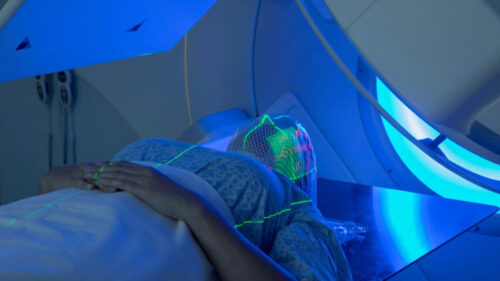Source: www.iaea.org
Author: Peter Lee, IAEA Department of Nuclear Sciences and Applications
More people with head and neck cancer in low- and middle-income countries (LMICs) may be able to access radiotherapy, after research carried out by the IAEA showed that fewer but higher doses of radiation treatment resulted in similar clinical outcomes to standard radiotherapy treatments. Reducing overall treatment times for this type of cancer could help countries to shorten waitlists, enabling more patients to receive timely treatment while also reducing the cost and full treatment duration.
It was the largest randomized controlled trial of its kind, involving 12 centres in ten LMICs – Argentina, Brazil, Cuba, India, Indonesia, Pakistan, Philippines, South Africa, Thailand and Uruguay. The results have been published in the International Journal of Radiation Oncology, Biology and Physics.
In 2020, there were over 945 000 new head and neck cancer cases globally causing 468 000 deaths. LMICs bore the brunt of this burden at an estimated 76 per cent of new cases and 84 per cent of deaths. Global efforts such as the IAEA’s Rays of Hope initiative are endeavouring to close this kind of gap through strengthening countries’ capacities to combat cancer by providing life-saving equipment and training. Yet many cancer patients – including in high-income countries but especially in LMICs – face long waitlists. Increased demands for radiotherapy, insufficient human resources, inadequate infrastructure and the concentration of care in national capitals and city centres all prolong the time it takes for treatment. These waiting periods not only add to the anxiety and uncertainty that patients and their families endure but can also compromise prospects for survival.
What is Radiation Therapy? | IAEA
For head and neck cancer patients around the world, a new evidence-based, resource-efficient approach has the potential to increase access to radiotherapy. In 2010, the IAEA launched a coordinated research project (CRP) – the HYPNO trial – to test an advanced treatment technique on a disease that disproportionately affects LMICs. Conventional treatments for head and neck cancers normally require patients to undergo seven weeks of radiotherapy. Previous clinical trials explored the viability of intensified treatment regimens that delivered either a higher overall dose over the same seven-week period (hyperfractionated radiotherapy) or the same total dose but over a shorter period of five to six weeks (normo-fractionated accelerated radiotherapy, as seen in the IAEA-ACC study). Both approaches were found to be safe and effective, with the latter notably using fewer radiotherapy-related resources.
Building on this body of evidence, the IAEA conducted applied research that examined a more intensified treatment regimen (hypofractionated radiotherapy): fewer but higher doses of radiation over the course of four weeks – nearly half the time that standard radiotherapy takes. Under this first-ever comparison, 729 patients received either normo-fractionated accelerated radiotherapy or hypofractionated radiotherapy. Patients in both groups showed similar outcomes and survival rates, demonstrating the safety and effectiveness of fewer but higher doses in a condensed time frame.
The trial’s practice-changing results were presented at the 65th annual meeting of the American Society for Therapeutic Radiology and Oncology (ASTRO) by its principal investigator, Søren M. Bentzen, Professor of Radiation Oncology and Director of the Division of Biostatistics and Bioinformatics at the University of Maryland School of Medicine. Held in San Diego, California from 1 to 4 October, ASTRO’s annual meeting drew over 11 000 healthcare professionals from around the globe who specialise in treating patients with radiation therapies.
“There is a great opportunity and need to conduct randomized controlled trials in LMICs to define evidence-based best practices within these settings,” Bentzen said highlighting the HYPNO trial as a good example of such research. “The IAEA played a crucial role in facilitating the trial via the long term relationships they have built with clinicians in cancer centres all over the world,” he pointed out.
As a direct result of the HYPNO trial, radiation oncologists can now treat more head and neck patients while maintaining similar clinical outcomes. For providers and patients alike, hypofractionation offers a cost-effective and convenient tool to navigate resource constraints.
“HYPNO fundamentally demonstrates both the impact of conducting funded research that corresponds to global cancer needs and the importance of multi-national trials to inform clinical decision making through powerful, real-world data on the impacts of treatments,” said May Abdel-Wahab, Director of the IAEA Division of Human Health. “Innovation in cancer care, which the IAEA supports through its coordinated research activities and its Rays of Hope Anchor Centres, will be key to ensuring that all patients, regardless of where they live, can receive the timely and high-quality care that they deserve,” Abdel-Wahab emphasised.


Leave A Comment
You must be logged in to post a comment.